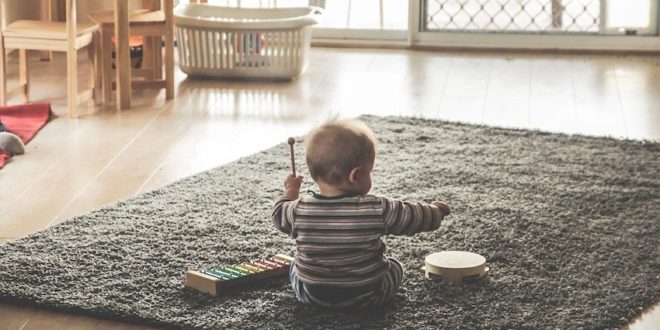Parents, Grandparents and caregivers want to provide a safe place for their children to live and play but too often child proofing these areas gets put off. This has caused thousands of household accidents that could have easily have been prevented. The good news is child proofing is not difficult and can easily be completed in one day.
It is important to protect your grandkids from common household dangers before you have them stay in your home. If you wait, things can become hectic and easily get put off until later. Below are our seven basic tips on how to childproof your home.
Child proofing doesn’t necessarily require special devices, just common sense. Other areas definitely require the use of a child proofing device, however, not all children are the same.
Here are some basic steps for child proofing your home.
1. Move Cleaners, Medicine and Other Poisons
You need to move any poisonous substances out of the reach of children. A common mistake is to keep cleaners under the kitchen sink or bath products on the ledge of the tub. While you might think that child resistant caps will protect your children, you should be aware that the requirements for a child resistant package may mean that at least 80-85% of children couldn’t open them. That means your grandchild might. All poisons and medicines should be stored in a high cupboard or locked area.
2. Block Stairways
Not surprisingly, falls are one of the biggest causes of injury to young children. Stairways are particularly dangerous and should always be properly gated. Never use pressure mounted gates at the tops of stairs since your child may be able to put enough pressure on them to give way.
Despite having a gate, it is important to keep a close eye on children around staircases. No safety device outweighs the importance of adult supervision.
3. Keep Children out of Dangerous Rooms
The bathroom, garage, and office can all be dangerous areas for children. To keep them safe, use door-knob covers and door locks. Place a slide lock or hook-and-eye latch high on the door, out of a child’s reach.
4. Keep Windows Safe
Lock windows or use guards to prevent them from opening too far. Screens will not stop children from falling out of a window. Make sure blind cords are out of reach and the beds, cribs and other furniture are moved away from windows where a child could climb up and reach. You’d be surprised what they are capable of!
5. Outlets, Drawers and Cupboards
There is a huge assortment of products aimed at protecting children’s fingers from being caught in door hinges, slammed in drawers or by closing cupboard doors. Test out products in the store to see how different products are used. The main purpose should be to prevent an accident, but if you find the products difficult to use you may end up not using them at all.
6. Small Toys and Other Choking Hazards
Another major cause of hospital visits for small children is choking. Small toys, batteries, buttons, coins and other objects go straight into the mouths of babies and toddlers (and even some preschoolers). Prevention is key – if you have older grandchildren, they should be taught to keep small toys out of the reach of younger children. Keep a keen eye on objects on the floor where your baby is present.
7. Monitor New Dangers
You will need to be constantly aware of what your grandchildren can get access to. As they grow and develop, they may suddenly be capable of reaching or pulling down items you didn’t think of.
Don’t forget most child proofing devices you buy are temporary solutions to prevent the most disastrous accidents. It would pay to teach your grandchildren to behave and where to be especially careful. After all, they will likely be in many homes that are not child proofed like yours and their safety will depend on understanding what’s not safe.









Join the Discussion
Type out your comment here:
You must be logged in to post a comment.